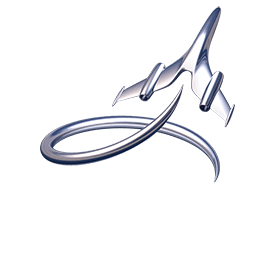Boeing, the titan of aircraft engineering, is presently navigating tumultuous skies that are defined by legal conflicts, safety difficulties, and a bombardment of public scrutiny. This is all taking place inside the sophisticated network of aviation.
In the midst of a storm that threatens its image and status in the industry, Boeing finds itself in the heart of a storm that includes shareholder lawsuits, government investigations, and worrisome occurrences involving its airplanes.

Allegations that have arisen as a result of the catastrophic accidents that occurred with two 737 Max airplanes are at the core of Boeing’s legal problems. After conducting exhaustive investigations, the federal authorities have unequivocally established that the Maneuvering Characteristics Augmentation System (MCAS) had a significant part in these mishaps. Following this, the Department of Justice did not lose any time in initiating the process of bringing criminal charges against Boeing. The allegations accuse the firm of engaging in fraudulent activity against the Federal Aviation Administration (FAA).
In January of 2021, Boeing made the decision to enter into a deferred prosecution agreement in order to protect itself from further potential legal implications. While this agreement does provide some degree of settlement, it does so with a number of rigorous conditions attached to it. In addition to being compelled to pay impacted airlines and the families of fatalities, Boeing has also committed to adhering to severe reporting and transparency rules for a period of three years.
However, the effectiveness of this agreement is now being evaluated, since recent reports indicate that the Department of Justice has begun a new criminal investigation into another event involving Boeing’s aircraft. This probe is part of an ongoing investigation into the incident. The discovery of this probe by the Wall Street Journal adds another degree of complication to the legal disputes that Boeing is engaged in. This indicates that the repercussions from the disasters involving the 737 Max continues to resonate throughout the corporation.
On the other hand, legal entanglements are just one aspect of the issues that Boeing faces. Concerns about the safety of its aircraft have also been brought to the forefront of attention. The pilots of a United Airlines 737 Max-8 aircraft described a terrifying occurrence that occurred in February. The incident occurred when the controls of the aircraft were stuck as it was landing at Newark airport. The federal authorities were forced to initiate a thorough inquiry into the situation as a result of this disturbing event, which raised doubts about the dependability and safety of Boeing’s flagship aircraft type.
The FAA has lately raised red flags about the de-icing technology that is installed on both the 737 Max and the 787 Dreamliner aircraft, which is adding to the problems that Boeing is experiencing. The evidence provided by the agency brought to light possible problems that might affect engine thrust, which casts a shadow on the safety of these aircraft and raises worries among aviation authorities and industry stakeholders.
During a trip from Australia to New Zealand, a 787 Dreamliner that was operated by LATAM Airlines had a quick and severe decrease in altitude. This was a disturbing sequence of events that occurred. There were roughly fifty passengers who sustained injuries as a consequence of the event, and one of them was reported to be in critical condition. The occurrence caused shockwaves to go throughout the aviation world. Despite the fact that the precise reason for the decrease in altitude is yet unclear, passengers have reported receiving contact from one of the pilots of the aircraft suggesting a momentary loss of control. This has further heightened worries over the safety and dependability of Boeing’s aircraft.
As Boeing struggles to overcome these complex difficulties, the company’s safety measures, technical standards, and corporate governance policies are coming under increasing scrutiny. Stakeholders, which include airlines, passengers, investors, and regulatory agencies, are keeping a close eye on the developments and are seeking responsibility and transparency from the aerospace giant.
As Boeing attempts to traverse the difficult landscape of legal challenges, safety concerns, and reputational harm, the path that lies ahead for the company is riddled with uncertainty. In order to determine the firm’s future trajectory in the aviation sector, it will be essential for the corporation to demonstrate that it is capable of successfully addressing these difficulties, restoring confidence among stakeholders, and maintaining its commitment to safety.
More on Boeing
A former whistleblower for Boeing, was discovered dead in the United States.

